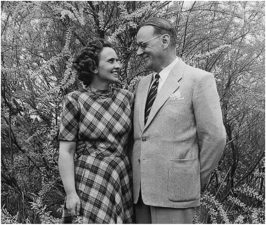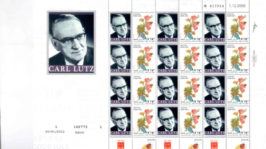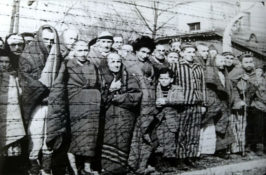The incredible story of Carl Lutz, Swiss diplomat who saved 60,000 people from Nazi death camps
The feat of the vice-consul stationed in Budapest, Hungary, was remembered by the Raoul Wallenberg Foundation on the 44th anniversary of his death.
“He was one of the most outstanding saviors of victims of the Holocaust. His heroic deed is worthy of our eternal gratitude and recognition,” stated the foundation.
Last Sunday the Raoul Wallenberg Foundation remembered Swiss diplomat Carl Lutz, “hero of the Holocaust” responsible for saving 60,000 Jews from Nazi persecution in Hungary during World War II.
“Carl Lutz was one of the most outstanding saviors of victims of the Holocaust. His heroic deed is worthy of our eternal gratitude and recognition,” said a statement signed by Eduardo Eurnekian, president of the foundation, and its founder Baruch Tenembaum.
Lutz died on February 12, 1975, in the city of Bern, fourteen years after his retirement from diplomacy. Along with his wife Gertrud, he had received the title “Righteous Among the Nations” in 1965 from the Yad Vashem Holocaust Memorial Museum, located in Jerusalem.
In addition, in 2012, and through the efforts of the Raoul Wallenberg Foundation, his history was immortalized on a commemorative stamp issue by the Israel Postal Authority.
Lutz’s link with Israel began in 1935, when he was appointed vice-consul of Switzerland at the British Mandate of Palestine.
There he lived “six unforgettable years” in the city of Yaffo, recording in his personal photographic archive the old city of Jerusalem, the caravan of camels on the coast of Tel Aviv and sharing meal with the German settlers in Sarona.
He witnessed the beginning of the immigration of Jews to Palestine as they were escaping Nazi persecution in the period before the beginning of the Second World War.
In 1942 he was assigned to the Swiss diplomatic delegation in Budapest, Hungary. It was at that time he began his efforts to protect tens of thousands of Jews who were in danger of being deported to the extermination camps by the fascist authorities, allied with Nazi Germany.
Cooperating with the Jewish Agency, an organization in Palestine that coordinated Jewish immigration, he issued safe conducts for more than 10,000 Hungarian Jewish children and it is estimated that around 60,000 people escaped the Holocaust thanks to his efforts.
His tactics were many and varied, his wife Gertrud providing assistance every step of the way. They issued Swiss government letters of protection (Schutzbriefe) to delay deportations to concentration camps. They also granted 50,000 passports that made it possible for Jews to leave the country, and also coordinated the delivery of medical aid and food.
On one occasion the diplomat threw himself into the Danube River to rescue a Jewish woman who was shot by Hungarian fascists and thrown into the river. Lutz emerged with the victim and confronted the officers, asserting his authority and that of the documents he got for her. Finally he managed to take the woman to a medical center.
In Budapest Lutz also met Raoul Wallenberg – a Swedish diplomat after whom the foundation was named, responsible for saving more than 62,000 people from the Holocaust before dying as a prisoner of the Soviets in 1947 – who quickly instructed him in various rescue methods.
When Hungary was liberated from the Nazis by the Red Army, Lutz remained there to ensure the welfare of the Jews who had not yet managed to emigrate, and in January 1945, shortly before the end of the war, he finally returned to Switzerland.
Lutz and Gertrud divorced a year later, and the vice-consul remained in the foreign service of his country until his retirement in 1961. He died in 1975, but the legacy of his work remains until today being remembered and invoked as a symbol in the face of the darkness that Nazism sowed over Europe.



